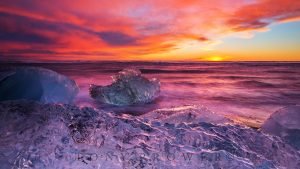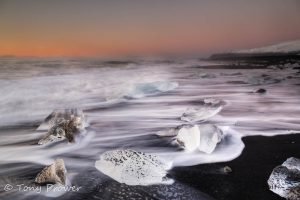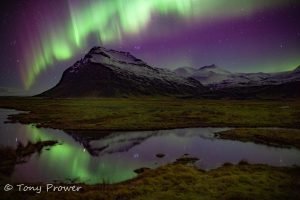Milky way photography
For us Iceland based photographers, photographing the Milky Way is generally something we do while we are waiting for the Northern Lights to appear. There are many parts of Iceland with zero light pollution so it is worthwhile to head out on a moonless night if there is a cloudless sky. The Milky Way is normally less vivid than the aurora and requires all the equipment needed for Northern lights photography, but on volume 11. We all had some nice opportunities on this moonless night.
Superior Live View
This was the first time I tested my new Canon 5d live view in a real dark situation. I was able to see a few of the brightest stars in the live view. This meant that I was able to fine focus the lens and this also meant that I could use a larger aperture such as f/2.2 to achieve more exposure within 19 seconds. This shutter speed really reduces the amount of movement in the stars (star-trails) which is preferable in a Milky Way photograph.
Canon’s live view is an invaluable tool that can increase your chances of taking a successful night photo. Getting a fine focus on stars is a relatively new concept. Stars are too small and dim for auto-focus and the infinity mark on your lens can vary in accuracy with various temperatures. If the moon is visible, you can sometimes use auto-focus to get a perfect infinity focus. You can’t see the Milky way so well when the moon is out, so having the ability to get a perfect infinity focus on a moonless night is a fantastic bonus.
This live view is an invaluable tool that can increase your chances of taking a successful night photo.
Hali

This scene was taken from the farmland at Hali. This is the hotel base for most of our multi-day tours. It is great to be able to walk from your hotel room to photograph the Milky way.
Night Photography
Milky Way camera gear.
Choose your equipment for Milky Way photography carefully .
- Sturdy Tripod – very important for night photography. I recommend Really Right Stuff or GITZO
- Dark Cloth or card – on cold evenings, a gloved hand will work.
Wide Angle Lens
Photographing the Milky Way is a test for any lens. Cheap lenses will have disappointing results. My best aperture for Milky Way was f/2.2 on a f/1.4 lens. Using f/1.4 produced coma & f/2.8 doesn’t let in enough light in the 20 seconds exposure. F/2.2 was a nice aperture for that little extra exposure and reasonable sharpness.
Canon 5D mark IV
Choose a camera that can take a long exposure and has full manual control The Canon 5D3 really advanced my Milky Way photography. The live view is so powerful could pick out individual stars for fine manual focussing. This is so amazing and useful in freezing climates when your ‘Infinity point’ can change. Check out my first Milky Way sessions at Jokulsarlon with the 5D2 HERE. These pro-level cameras have full frame sensors which are perfect for Milky Way photography. It is possible to take the iso settings into the 1000s to get super exposures in a short time.






















